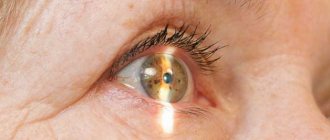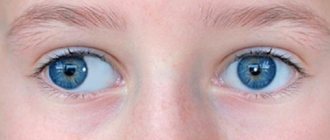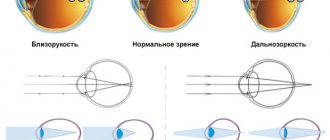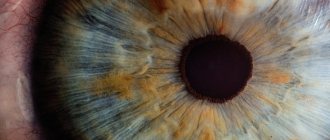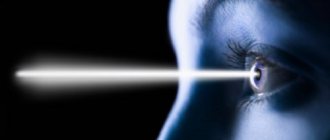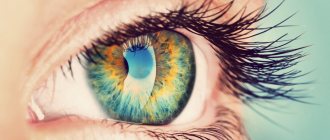Harmful substances in LED lamps
To determine how environmentally friendly LED lamps are, consider what materials are used in their production.
The body is made of plastic, steel, aluminum alloys. The flask containing the board with diodes is not sealed and is not filled with toxic gases. The light bulb device includes a driver.
From the above we can conclude that LED lamps are no more harmful than other electronic devices and can be disposed of as normal household waste.
Main conclusions
It is possible to answer the question whether LED lamps are harmful or not only after a thorough study of their design and basic principles of operation.
- The design of LED lamps does not involve the use of hazardous chemicals and substances.
- High-quality products cannot be cheap due to the features of their device.
- When purchasing a lamp, you need to pay attention to the color temperature of the product, thereby minimizing harm to the eyes when using it.
- In the evening, it is better not to use LED lighting, as it negatively affects melatonin production.
- IR and UV radiation emitted by the devices is extremely small and harmless to humans.
LED lamps are not only extremely efficient for domestic use, but also safe and environmentally friendly. Especially in comparison with mercury energy-saving analogues and incandescent lamps.
Previous
LEDsHow to check the performance of a diode with a multimeter
Next
Lamps and fixtures How to properly connect an LED to a 220 V network
The dangers of LED lighting
Research conducted by scientists has revealed that it is the radiation from LEDs that poses the danger. Wherein:
- Blue and violet short-wavelength components of the spectrum cause harm;
- green light is less harmful;
- red does not cause any harm to the human body.
LED lamps have a negative effect on the retina of the eye. The resulting injuries may be:
- photomechanical (occur when exposed to a shock wave of light energy);
- photothermal (appears when tissue is heated during irradiation);
- photochemical (cause chemical changes under the influence of light).
It follows that looking at bright LED lamps is dangerous. But the same conclusion can be drawn in relation to incandescent lamps or fluorescent lamps.
Manufacturers supply lighting sources with diffusers and shades that provide soft light. Thanks to this, it is possible to significantly reduce the harm caused to human health by LED lamps.
Choosing a good LED lamp
When purchasing, you should take into account some recommendations from experts, which will help minimize the harm LED lamps have on your eyes.
Adviсe:
You should not buy a cheap product of questionable quality.- Before purchasing, you need to pay attention to the packaging and study the information on it.
- Lamps with a light temperature of 2700-3000 K are suitable for residential premises.
- Having decided on an LED lamp, you should not immediately purchase a large batch of such goods. It’s better to take 2-3 units and test them for a week. If during this time there is no discomfort in the eyes, then you can choose the products of this manufacturer.
- LED lighting for the home is unacceptable for the place where a student studies.
Whether it is worth installing LED lamps everywhere or not - people decide individually. Lighting must be of high quality to be beneficial. It is important to go out into clean fresh air more often. In addition, it is necessary to avoid direct exposure of the light from the lamp to the eyes.
Hazard classification
In order to correctly assess the harm of light radiation, it is necessary to refer to regulatory documents. For example, the currently valid GOST R IEC 62471-2013 describes the parameters of the photobiological safety of lamps and lamp systems, including LED devices.
Based on this standard, studies were carried out to establish that:
- Blue LEDs with a power of 15 W and higher cause the greatest harm to human health; they are classified in the third risk group;
- the danger of a blue spectrum diode with a power of 0.07 W is not great, it can be classified in the first group;
- at the same color temperature, white LEDs emit a dangerous blue component 20% more than other light sources;
- LED lighting used in everyday life can be classified as risk group 2, if we assume that the danger of incandescent lamps is limited to the zero or first category.
How LED lamps affect vision.
7 June 2021, 18:45
Prolonged exposure to LED radiation on the human eye can cause damage that cannot be eliminated with medications and surgical interventions. With the advent of LED lighting sources in Russia, this opinion was very widespread even in a professional environment. Is it really?
LED pendant lamp ESCADA 371R/S
Discussions about the negative impact of LED lamps on human vision begin with understatement. There is no irrefutable evidence of the safety of LED lighting, which means that such lamps are potentially dangerous. Also, the majority of the population often confuses LED and fluorescent lamps, as a result of which negative properties are mistakenly attributed to LED lighting.
“LED and fluorescent lamps are not the same thing.”
LED light bulbs began to be used in advanced European countries a very long time ago. Naturally, during this time, scientists have conducted many studies, during which they proved that LED lamps are absolutely safe for humans. LED bulbs produce clear, even, flicker-free light. For example, fluorescent lamps are very irritating to the eyes and cause rapid fatigue due to constant flickering, which can be completely invisible to a person. But our eyes catch them, so they get tired very quickly. LED lamps, on the contrary, emit a soft light, preventing rapid eye fatigue. Such light sources are recommended for use in residential areas, including children's rooms, bedrooms and kitchens. We wrote earlier how to choose an LED lamp for the kitchen.
Fluorescent lamps also contain mercury, which is why European scientists have long recognized them as harmful to health! The use of such lamps is potentially dangerous.
“There is not a single toxic substance inside the LED lamp, and it is not so easy to break it - the body is made of aluminum and is highly durable.”
Also, some scientists in Russia and abroad believe that they have a negative effect on the organs of vision. They refer to the blue light emitted by LEDs. However, LED lamps are structurally designed in such a way that all dangerous radiation is completely neutralized by diffusers.
They also do not emit ultraviolet radiation, which is typical for halogen lamps. That is why LED lamps are the best option for any type of lighting.
The ESCADA company constantly monitors the quality of its products, which is confirmed by international certificates and certificates in accordance with the technical regulations of the Customs Union. All our products are covered by a 2 year warranty.
Recently, scientists working in the field of medicine have begun to pay more and more attention to LED lamps. For example, psychiatrists claim that the soft and even light of such lamps has a positive effect on a person’s emotional background, calms them down, and supports mental health. All office owners are recommended to switch to LED lighting - this will help increase the productivity of employees, reduce tension in the team, improve mood, and relieve eye fatigue. There are several other interesting facts related to LED lamps and their effect on human health. We described all these facts in detail in our article.
More recently, scientists have found that the use of LEDs can help prevent vision loss in people suffering from alcoholism. For several weeks, experiments were carried out on rats that had lost their vision due to alcohol poisoning. In 95% of animals, vision was completely restored. As it turned out, LED lighting accelerates the regeneration of tissues and neurons, and therefore can be successfully used in the treatment and prevention of many diseases.
Thus, LED lighting is safe for human vision. Moreover, with the correct arrangement of lighting sources and the use of high-quality LED lamps, the service life of LED systems can be increased to 72 thousand hours, which is 50 times longer than the nominal service life of incandescent lamps and 16 times longer than that of fluorescent lamps. If you still have any questions, you can find out more on the official website of LED lamps escada-home.ru.
Effect on melatonin biosynthesis
Melatonin is a biologically active substance (hormone) produced in the endocrine gland located in the human head. Affects metabolic processes and physiological functions of the body.
Scientists have proven that any bright light sources suppress the secretion of melatonin. But it is the intense light of the blue spectrum present in fluorescent and LED lamps that has a greater impact.
In this regard, a number of recommendations have been developed to reduce the harm caused by using energy-saving lighting sources. Scientists advise:
- for apartments, use incandescent lamps, especially in chandeliers located in bedrooms;
- 2-3 hours before bedtime, avoid exposure to any bright sources;
- When working at a computer in the dark, use special glasses that do not transmit the blue spectrum of radiation;
- For night lighting in houses, use red lighting;
- use products only from reputable, well-known manufacturers;
- Use LED lamps only in luminaires specifically designed for them.
At the same time, for office work, it is the cold spectrum of lighting that is preferable, which tones and increases a person’s performance.
Harm of LED lamps to humans
The first LED was created back in 1927 by Oleg Vladimirovich Losev (1903-1942) , but LEDs did not appear on sale until 1962 (then red LEDs with a wavelength of 650 nm appeared). In the 70s green, orange, and infrared LEDs appeared. In 1993, Shuji Nakamura received the first blue LEDs. These cheap LEDs were based on a compound of gallium nitride and indium nitride. The invention of Shuji Nakamura paved the way for the subsequent development of white LEDs obtained from blue LEDs using phosphor coating.
White LEDs are used for lighting purposes. Such lighting has undoubted advantages associated with low energy consumption, virtually no heating during operation, short start-up time and long service life . Many predict that incandescent lamps will be completely replaced by LED lamps. However, LED lamps have not only positive aspects, but also negative ones, and you need to know about this, since it is very important for our health .
Harm from LED lamps to vision
As studies show, the main disadvantage of LEDs used in lighting is the high intensity of short-wave radiation with high energy blue and violet spectra, which are harmful to the visual system .
Experiments conducted by Spanish scientists, the results of which were published in the industry journal Seguridad y Medio Ambiente, show that LED lamps can cause irreparable damage to the retina of the human eye . It has been scientifically proven that blue light has a negative effect on the retina of the eye. The injuries produced by such radiation are traditionally classified into three types: photomechanical (the effect of a shock wave of light), photothermal (caused by a local increase in temperature) and photochemical (changes in the structure of macromolecules).
Retinal pigment epithelial cells are important in the functioning of the visual system and their disruption can lead to vision problems and even blindness. In the experiment, scientists grew retinal pigment epithelial cells from healthy donors in a nutrient medium, which was replaced every 24 hours to prevent evaporation. Some of the cells were exposed to different light sources on a 12-hour light/12-hour dark cycle, while others were not exposed to light. After irradiation, the cells were processed and the number of dead cells was determined using special techniques. When exposed to LED lighting, the number of dead cells increased and the growth of new cells was suppressed. Blue light resulted in a very significant reduction in cell number , although green and white light also had high phototoxicity. Red light did not have such a significant effect. However, using lighting in which the red spectrum predominates all day is also wrong. Short-wave radiation from the blue spectrum contributes to more productive work and concentration, so in work areas it is better to use lamps or natural lighting systems that contain this spectrum.
You also need to understand that no artificial lighting can replace natural sunlight. Being outside in bright sunlight is important for everyone - both adults and children. According to research by endocrinologist Alan Christianson, to balance cortisol levels, adults should walk outside in daylight for at least 20-30 minutes. in a day. Children, in order to reduce the risk of developing myopia, need to be outside for at least 2-3 hours a day.
Classification of lighting according to risk level
EN 62471 standard classifies light sources according to their phototoxicity (from ultraviolet to infrared radiation). The standard identifies 4 risk groups, in accordance with the maximum permissible exposure time:
- 0 risk (no risk). When the maximum exposure time is more than 10,000 sec.
- 1 risk group (low risk). When the maximum exposure time is from 100 to 10,000 sec.
- Risk group 2 (moderate risk). When the maximum exposure time is from 0.25 to 100 sec.
- 3 risk group (high risk). When the maximum exposure time is from 0.25 sec.
Based on this standard, researcher Behar-Cohen determined that a blue LED with an intensity of more than 15 W belongs to risk group 3 ; if the light intensity is 0.07 W, then it belongs to risk group 1 . He classifies LED lighting for everyday use as risk group 2 (compared to traditional lighting sources, which belong to group 0 or 1). He also found that the amount of blue spectrum emission from white LEDs was 20% higher than daylight of the same color temperature.
LED lamps and melatonin
Despite the obvious advantages of LED lamps, many scientists recommend avoiding LED lighting, especially in the dark before bed .
Study after study has found links between nighttime light exposure and cancer (breast, prostate), diabetes, heart disease and obesity. Light suppresses the secretion of melatonin, a hormone that affects the day-night cycle. But lighting is only "dangerous" if we are exposed to it at a time when we should be in the dark, and if the exposure is sufficiently intense and long-lasting, says physicist Fabio Falchi. While light of any spectrum can suppress melatonin secretion, blue light does so to a greater extent . Therefore, scientists recommend relying more on incandescent lighting after dark, especially in the bedroom.
Also, in order not to disturb the day and night routine, it is recommended:
- use dim red spectrum lighting;
- do not look at a bright screen 2-3 hours before bedtime;
- When working at night with a large number of electronic devices, wear special glasses that block the blue spectrum.
Harm from flickering lamps
The flickering frequency of 300 Hz of energy-saving lamps negatively affects the human nervous system. His performance decreases, irritability and fatigue increase, hormonal levels are disrupted, and circadian rhythms are disrupted.
But, if the voltage at the driver output undergoes additional high-quality filtering, freeing itself from the variable component, the ripple value will not exceed the permissible 10%. Therefore, it is better to purchase LED lamps with high-quality drivers without saving on the cost of the devices.
The danger of white light
Although white LEDs exist, there are currently no semiconductors that emit white light. It is obtained in two ways:
- combining red, green and blue LEDs;
- combining blue, violet, ultraviolet radiation and phosphor (photoluminescence effect).
Human eyes are most sensitive to the blue spectrum. Long-term radiation can lead to retinal degradation. White light is especially harmful to the eyes of children.
Including low-power incandescent lamps of 40–60 W and LED lamps of warm white light in a lamp with several cartridges will help reduce the negative impact.
It is better to purchase devices whose color temperature is in the range of 2700 – 3500 K. This emission spectrum is closest to sunlight during sunset. Compliance with these conditions is especially important for children, since the child’s fragile body is most vulnerable to adverse factors.
In what cases will the influence of LED lamps on human vision be dangerous?
Despite the numerous advantages of LED lighting technology, scientists identify three problems when low-quality LED lamps negatively affect human vision:
- Ultraviolet radiation. If LED lamps are not manufactured in compliance with technical standards and their phosphor content is low, they can emit ultraviolet radiation, which leads to degradation of the retina;
- Flicker. The flickering effect of lamps, which causes fatigue and eye strain, dizziness and other consequences, is rarely observed with LED light sources - it is typical only for low-quality lamps;
- Blindness. The LED itself has a blinding effect. it using special lenses. But with an unscrupulous approach, they can save on lenses - such LED lamps have a bad effect on health. You can read more about lenses for LEDs here.
It turns out that cases where LED lamps have a negative effect on the human body are associated with the use of low-quality products. If you purchased a light source from a well-known brand, such consequences will be excluded. Such lamps are considered optimal for specialized lighting. For example, there is a positive effect of LED lamps on plants - they heat up minimally, do not flicker, and you can choose the flow of light in the spectrum that is optimally suited for a particular type of flower.
Electromagnetic radiation
Drivers of LED lighting sources generate high-frequency pulses, creating electromagnetic interference in the surrounding area.
This fact may affect the operation of some electronic devices: radios, televisions, WI-FI transmitters. It is important to locate these devices no closer than 40 cm from the source of interference.
The harm from electromagnetic radiation from an LED lamp is much less than the harm from a mobile phone. The danger that arises is insignificant for humans and can be neglected.
Use in crop production
Due to the lack of heating, LED lamps do not have a negative effect on plants, therefore they are actively used in additional lighting when growing seedlings of various crops. Even if you place the source just 1 cm from the shoots, you don’t have to worry about thermal burns or the complete destruction of the crop.
The LEDs in the phytolamp combine several colors. Each has its own beneficial effect:
- yellow supplies energy, starts photosynthesis;
- blue promotes the development and strengthening of the root system;
- red improves seed germination and promotes the formation of inflorescences.
As it grows, the combination of the spectrum is adjusted in accordance with the period of plant development.
Application in livestock
Light plays a vital role in animal life. The lack of natural light is easily compensated by LED lamps.
Using the variety of color spectrum of diode sources, you can influence the processes occurring in the animal’s body, achieving improved vital signs.
During the day, it is better to use short-wave radiation, causing, for example, a state of vigor in cows, which has a beneficial effect on the growth and maturation of young animals and on increasing milk productivity. At night, red lighting is turned on in the premises, which makes the animals sleep more peacefully.

